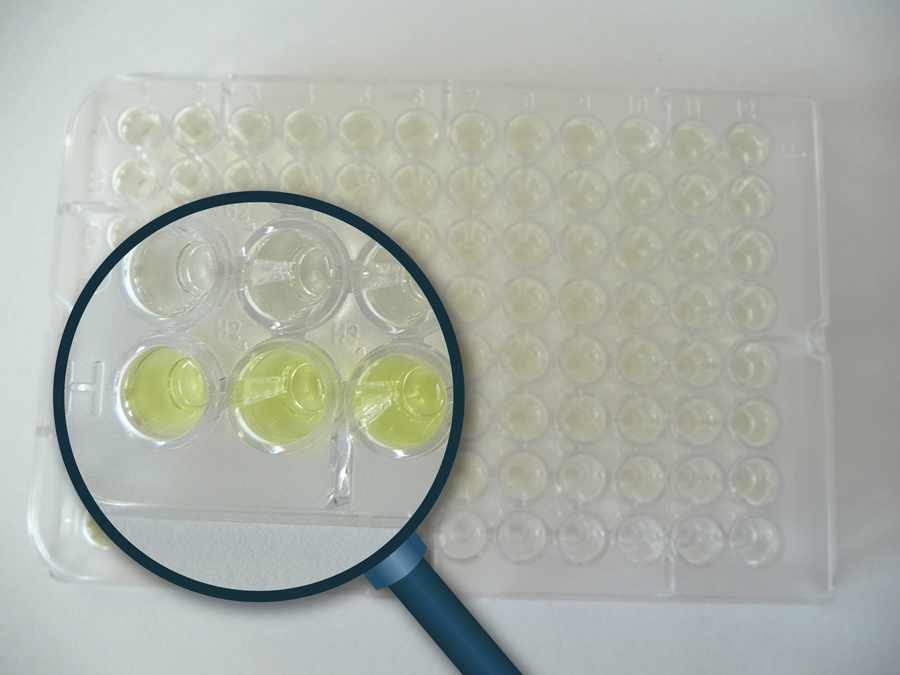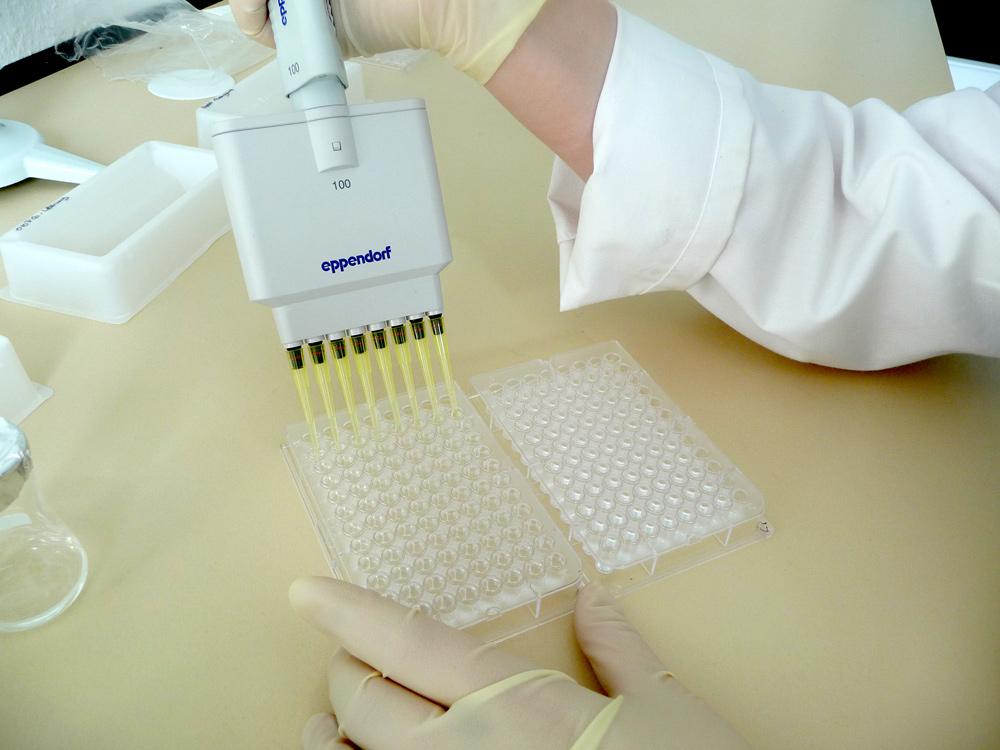The umu test according to DIN EN ISO 38415-T3 1996-12 determines the mutagenic potential of water.
The genetically modified bacterium Salmonella typhimurium TA 1535/pSK 1002, a gram-negative, facultatively anaerobic bacterium from the Enterobacteriaceae family, serves as the test organism. This strain has some important properties for a sensitive genotoxicity test:
- The bacterium used carries a modified genome. It is excision repair deficient (uvrB), has an incomplete cell wall (rfa) that is permeable to many substances, and no chromosomal lacZ gene.
- Compared to the original strain, the test organism still carries the plasmid pSK1002 with the umuC-lacZ gene and a gene for ampicillin resistance.


The bacteria are exposed to different concentrations of the test material under defined conditions. Depending on their concentration, genotoxins induce the so-called umuC gene. The induction of the gene is a measure of the mutagenic potential of the test material under investigation. Since the umuC gene in the test organism used is linked to the lacZ gene for ß-galactosidase, it is possible to measure the induction rate of the umuC gene by determining the galactosidase activity.
Therefore, the method is only applicable to test materials where intrinsic ß-galactosidase activity is excluded. False positive results are to be expected, for example, with biotechnological process wastewater containing galactosidase-positive test organisms.
The umu test is used to detect genotoxic effects as part of wastewater monitoring.
